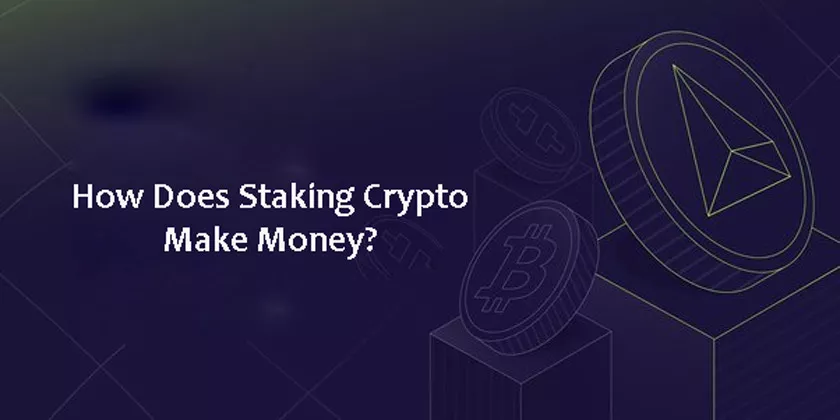In recent years, staking has become an increasingly popular way to earn passive income in cryptocurrency. It allows investors to earn rewards for holding and validating transactions on a blockchain network, often without expensive mining hardware.

How Does Staking Crypto Make Money?
This article will explore how staking crypto makes money and what investors should consider before diving in.
What is staking?
Staking holds and validates transactions on a proof-of-stake (PoS) blockchain network. Proof-of-stake is an alternative consensus mechanism to proof-of-work.
When validators stake their coins, they use them as collateral to secure the network. The amount of cryptocurrency a validator can stake is often limited by the network, with higher staked amounts increasing the likelihood of being selected to validate transactions and earn rewards.
Validators are incentivized to act honestly and protect the network, as any malicious behavior can result in a penalty or loss of staked funds.
Transaction Fee Rewards
In addition to newly minted cryptocurrency rewards, validators can also earn transaction fees for processing transactions on the network.
These fees are paid by users to prioritize their transactions and can be a significant source of income for validators. The fee structure and amount can vary by network and be influenced by congestion and user demand.
For example, validators can earn a share of the transaction fees users pay. These fees can fluctuate based on network activity, with fees generally increasing during high demand.
In some cases, the transaction fees earned by validators can exceed the newly minted cryptocurrency rewards, making it a more significant source of income for stakes.
Risks And Considerations
While staking can be lucrative for passive income, it has risks and considerations. Validators must be willing to put up their cryptocurrency as collateral, which can result in a loss of funds if they act maliciously or fail to meet their responsibilities.
Additionally, staking rewards can be influenced by network activity and the number of validators, making it a potentially volatile source of income.
Before staking, investors should consider the following:
- Network maturity: Staking on a new or untested network can be risky, as there may be unknown bugs or vulnerabilities that can result in a loss of funds. Investors should research the network’s history and community before staking.
- Staked amount: The amount of cryptocurrency can directly impact the rewards earned. Higher staked amounts may increase the likelihood of being selected to validate transactions but also come with a greater risk of loss.
- Network activity: Network activity can impact the rewards earned and the risk of loss. High network activity can result in higher transaction fees and rewards, increasing congestion and error risk.
- Validator reputation: Validators must act honestly and fulfill their responsibilities to earn rewards. Investors should research the reputation of validators before staking with them to ensure they are trustworthy and reliable.
- Exit strategy: Staked funds are often locked up for a certain period, making it difficult to exit a position if needed quickly. Investors should consider their exit strategy before staking and be prepared to wait for the staking period to end before accessing their funds.
Summing Up
Investors should research the network, staked amount, network activity, validator reputation, and exit strategy before staking crypto to minimize their risk of loss and maximize their potential rewards.
As the crypto space continues to evolve, staking will likely remain an attractive option for those looking to earn passive income in the digital asset ecosystem.
